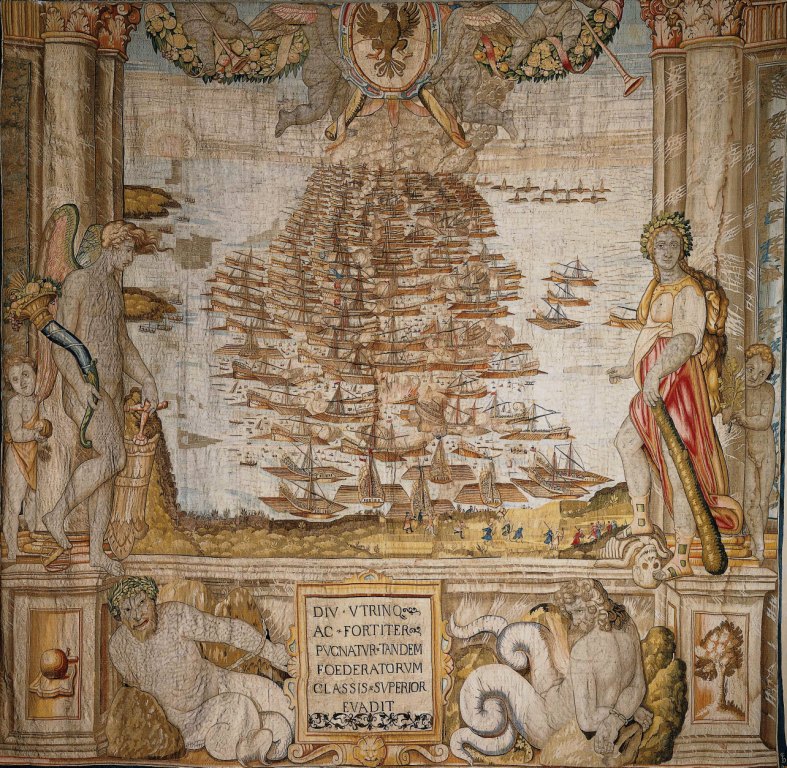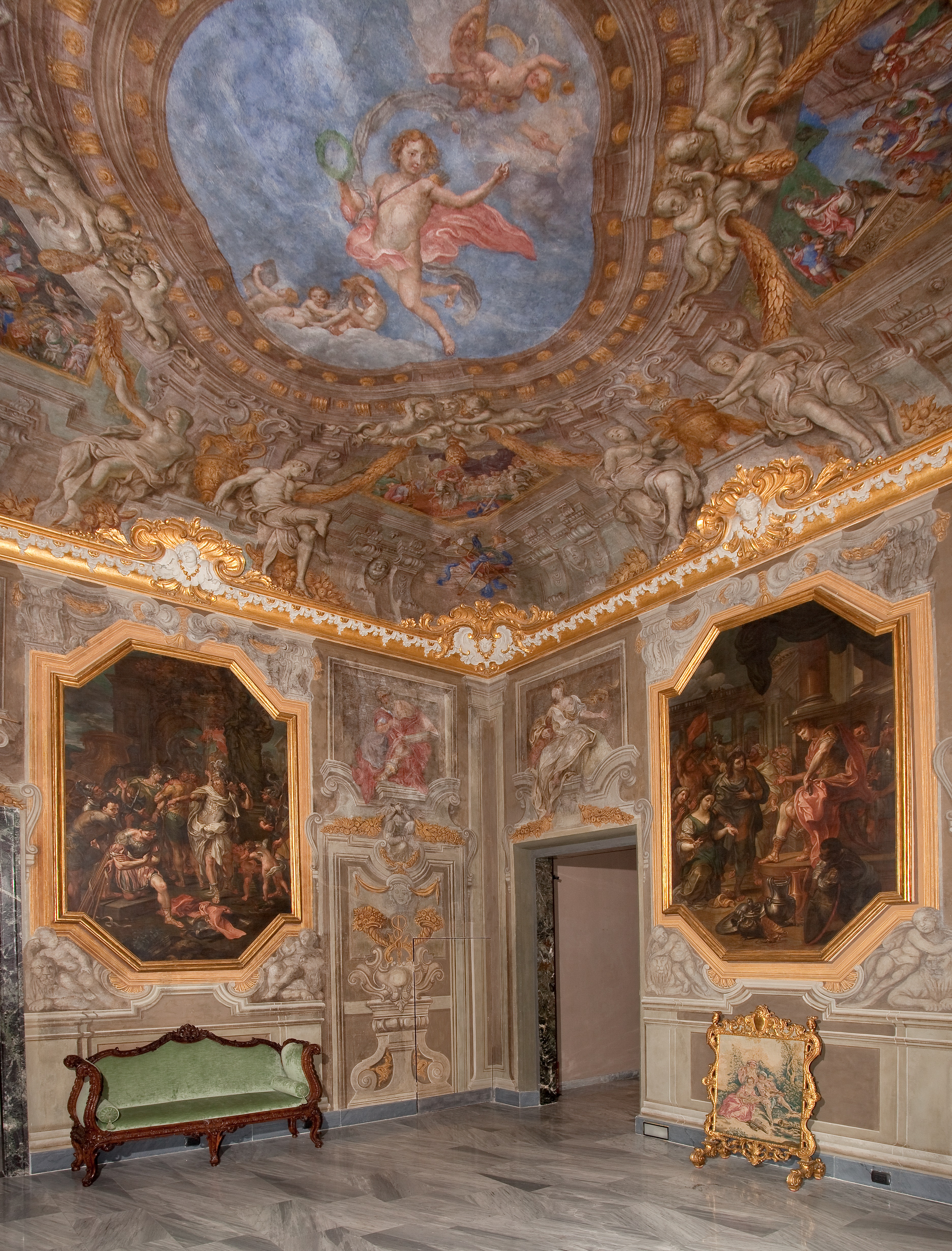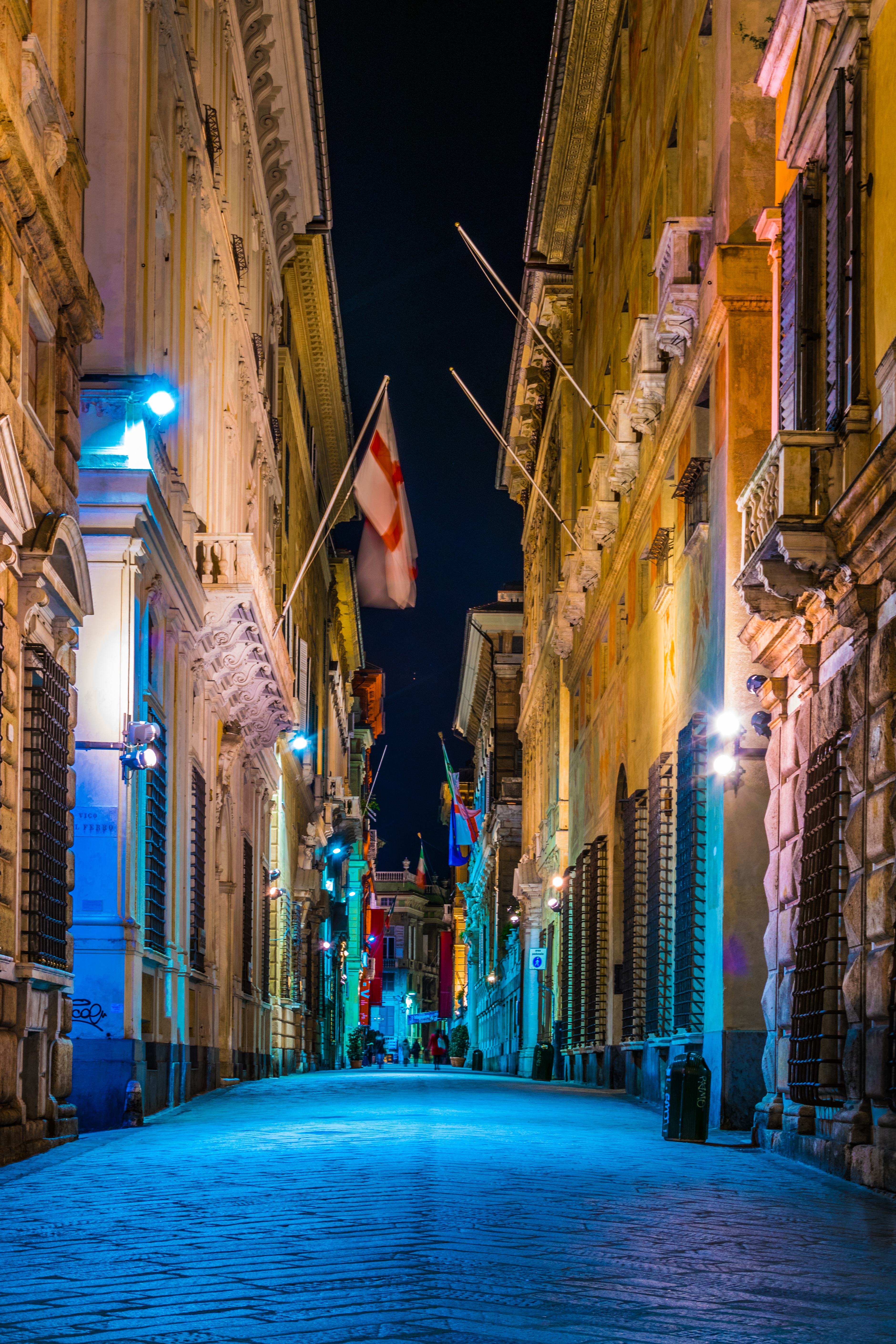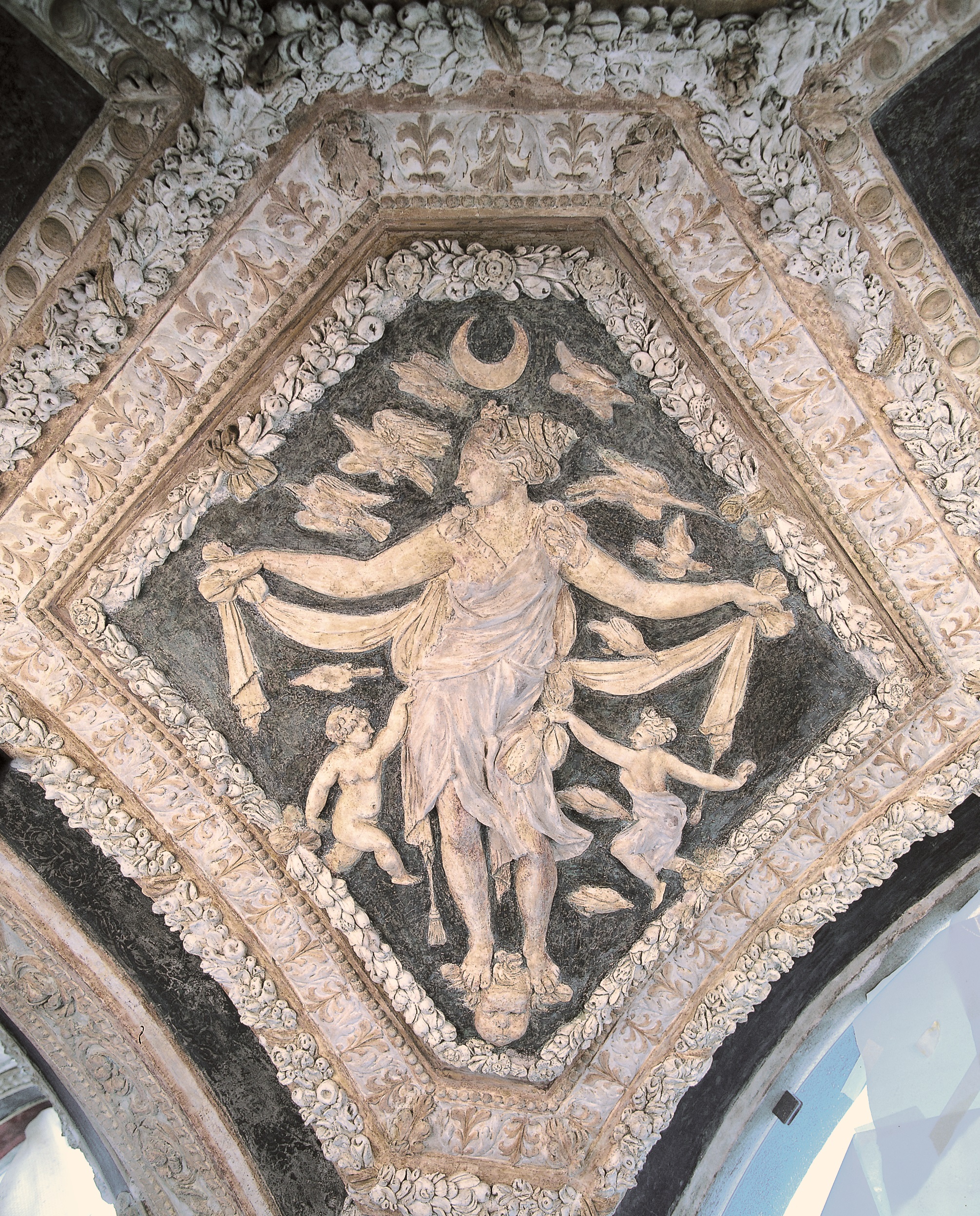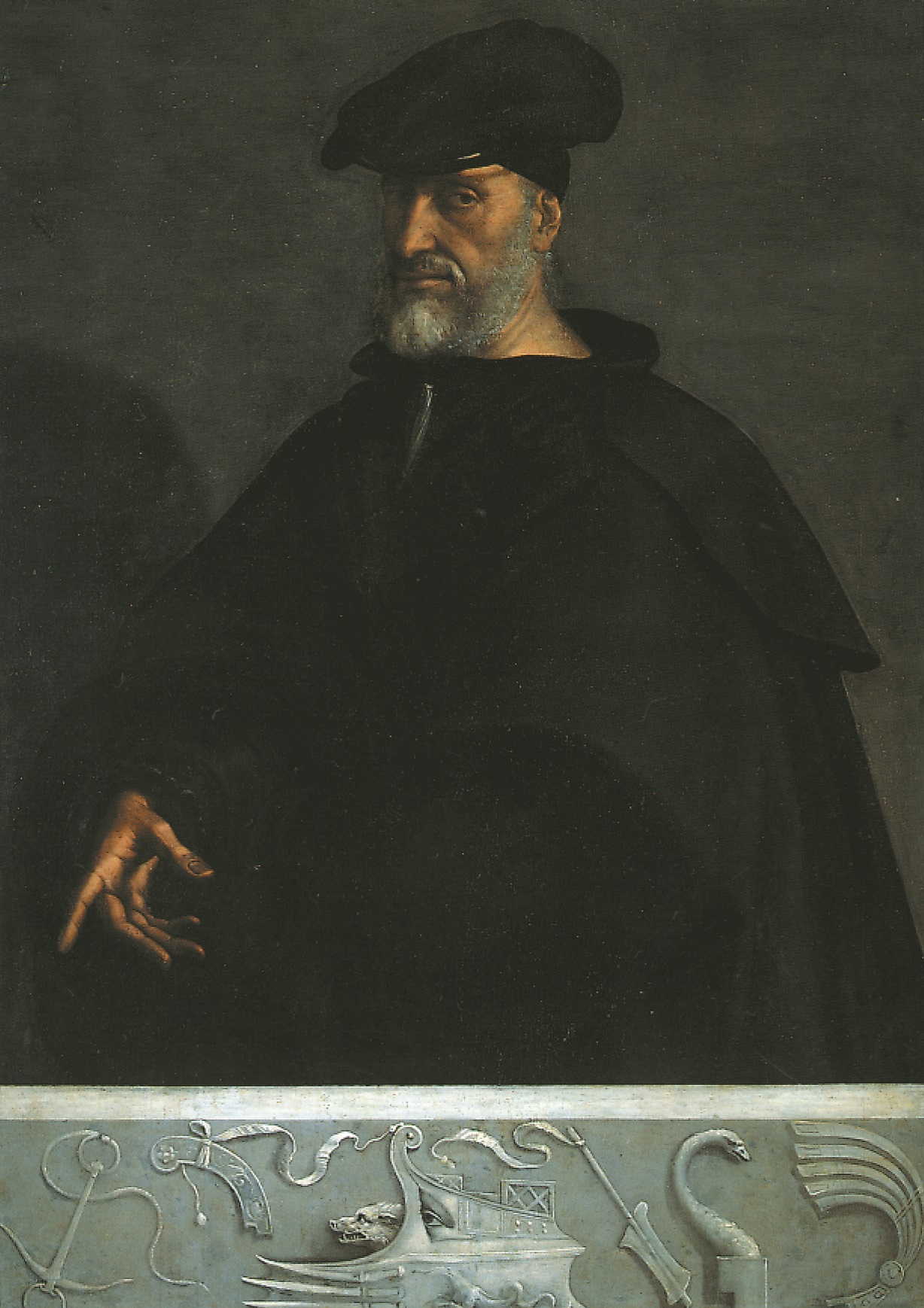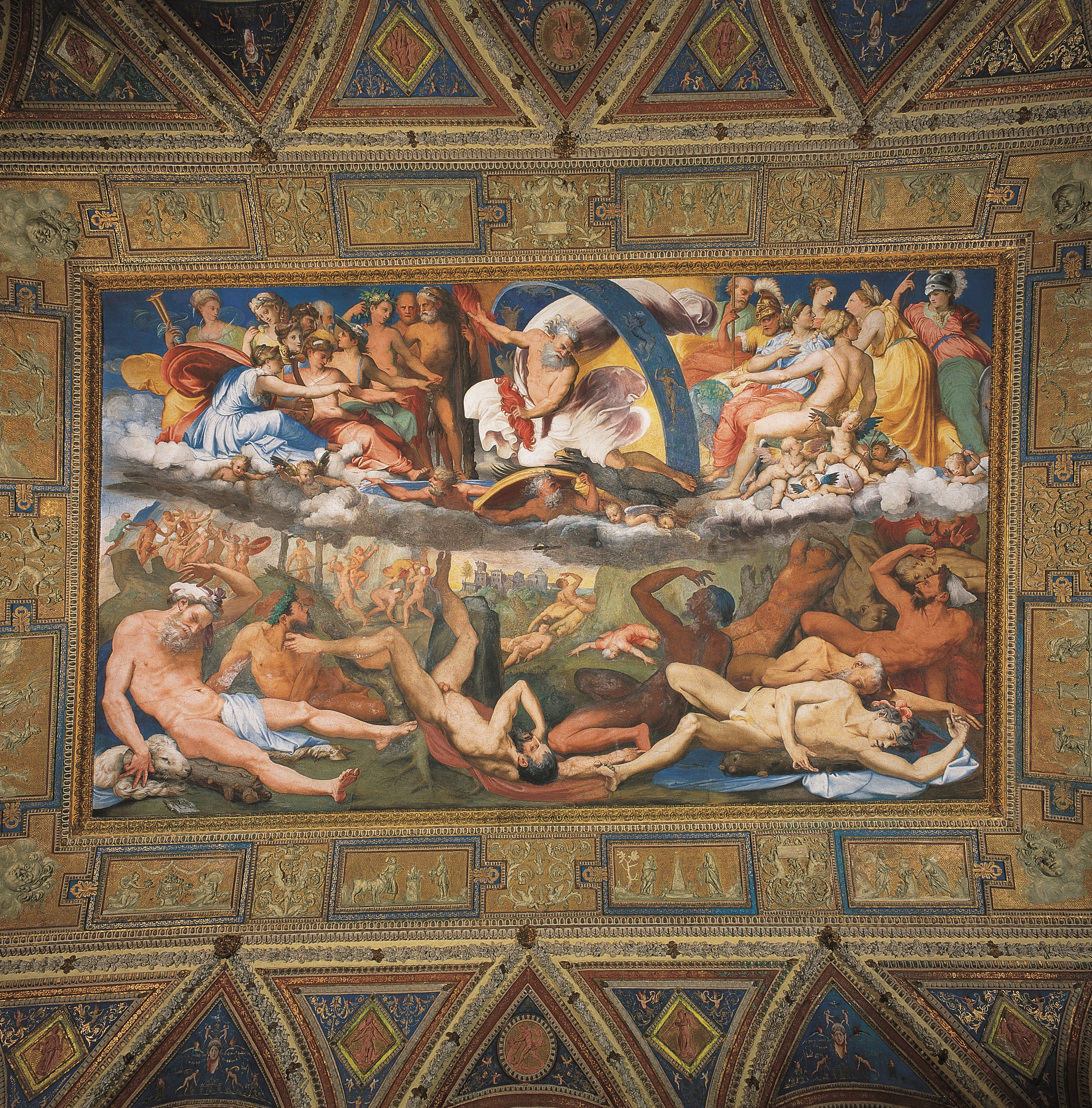L’ambiente deve il suo nome ai soggetti che vi dipinse, a fresco su muro e a tempera su tela, Lorenzo De Ferrari (1680-1744), il figlio del più celebre Gregorio, negli ultimi anni della sua attività e su commissione di Gio.Francesco giuniore Brignole - Sale (1695-1760), che di questa stanza aveva voluto fare il suo studio.
Prescindendo dalla tradizione locale De Ferrari non trasfigurò lo spazio per ambientarvi allusive mitologie, come nelle altre sale del palazzo, ma celebrò il tema “Virtù Patrie” attraverso una serie di immagini, tratte dell’antichità romana, variamente disposte all’interno di una decorazione particolarmente apprezzabile nel suo effetto di insieme.
Al centro della volta è raffigurata la personificazione del Valore che, messa in relazione alle Virtù cui alludono i puttini e i simboli in secondo piano, la configura come un emblema allegorico delle “Virtù Patrie”, cioè delle attitudini morali ritenute fondamentali per il governo della cosa pubblica.
Negli angoli sono dipinte piccole scene che illustrano episodi della storia romana antica – L’allocuzione di Scipione in Senato, Le Vestali custodiscono il fuoco sacro, Le matrone offrono i loro gioielli alla patria, Il trionfo militare di Costantino – che devono essere letti come esempi dell’esercizio delle virtù nei confronti della patria.
Sulle pareti altre personificazioni di Virtù – in senso orario, da ovest: Intelligenza (?), Consiglio, Fedeltà, Concordia, Soccorso e Felicità Pubblica – riprendono i concetti già espressi sulla volta, affiancando i grandi riquadri che ospitano quattro tele, dipinte a tempera, che illustrano ancora esemplari soggetti di storia romana: La giustizia di Tito Manlio Torquato nel condannare il figlio, La continenza di Publio Cornelio Scipione nel restituire la fidanzata ad Allucio, La fortezza di Muzio Scevola nel punirsi per non esser riuscito a uccidere Porsenna e La religiosità di Numa Pompilio.


